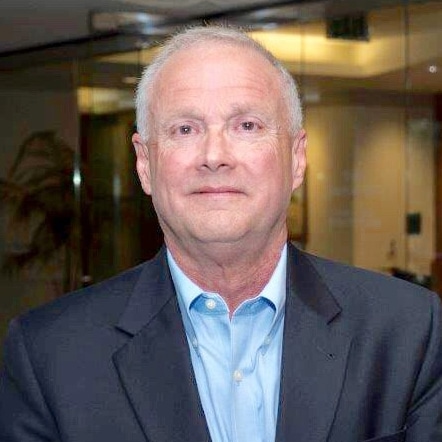By Kevin Kidwell, vice president national tax-exempt sales, OneAmerica®
If you oversee or coordinate your employer-sponsored retirement plan or have a team that’s in charge, you’ve no doubt heard about the Setting Every Community Up for Retirement Enhancement (SECURE) Act. Passed by Congress and signed by the president on December 19, 2019, it’s a major bill that affects all Americans.
Like any complex piece of legislation, the SECURE Act impacts companies like OneAmerica®, who administer employer-sponsored retirement plans and are now carefully studying the implications. For our experienced professionals, evaluating and addressing the SECURE Act provisions with clients and financial professionals has been a labor of love ─ especially for our tax-exempt business, because, as our leadership has long said, “Tax exempt is in our DNA.”
This landmark legislation, five years in the making, provides the most significant changes to the retirement industry in more than a decade. In general, the most dramatic changes are to traditional 401(k) plans. However, because nonprofits and healthcare organizations, schools and government agencies are unique and complex, it’s equally important for those who represent tax exempt plans to make sure they remain compliant.
Our analysis uncovered three main takeaways that should fuel important discussions for nonprofits:
- We have time to sort it out. The IRS and U.S. Department of Labor have yet to provide key additional guidance, and until then “good faith compliance” is the requirement.
- It’s unlikely that the legislation will require you to overhaul your existing employer-sponsored plan. The SECURE Act provides more opportunities and options – such as potentially combining forces with fellow organizations – that could allow your organization to take advantage of scale.
- Most likely, the government isn’t done making what they see as improvements to the retirement plan landscape. (Note: Effective dates may also be impacted by the COVID-19 pandemic.)
The SECURE Act contains nearly 30 provisions designed to increase the availability and use of employer-sponsored retirement plans. They may or may not apply to every participant, company or plan.
Here are some areas the SECURE Act may affect:
Accessibility
- Increases the automatic enrollment cap to 15% for safe harbor automatic enrollment plans. (A safe harbor is a provision in a law or regulation that affords protection from liability or penalty under specific situations, or if certain conditions are met.)
- Creates opportunities for long-term (by necessity or choice) part-time workers to participate in 401(k) plans.
- Contains additional provisions that make offering retirement plans more affordable for small businesses, including tax credits (up to $5,000) and elimination of outdated barriers to joining multiple employer plans (MEPs).
Lifetime income
- While retirement plan sponsors are currently required to regularly notify participants of the value of their plan (including the balance), employers will need to also provide defined contribution participants with an estimate of the monthly income as if an annuity were purchased (even if no annuity option is available).
- The act provides for a fiduciary safe harbor for selecting a lifetime income provider (usually an insurance company). While selecting a lifetime income option is a fiduciary responsibility, the act absolves the fiduciary of the liability should the provider’s financial condition deteriorate after selection.
- If a plan-level decision is made to eliminate the lifetime income option, the plan must allow the participant to take an in-kind direct rollover of the option.
Longevity
- The act removes the maximum age for traditional IRA contributions.
- The act increases the age for the start of required mandatory distributions (RMD) from age 70.5 to age 72. Those participants between 70.5 and 72 must begin taking the RMD by April of the year following their voluntary exit from their employer or their termination of employment. (NOTE: Due to recently passed CARES Act related to the COVID-19 pandemic, the requirement for RMDs for those over 70-1/2 has been waived for 2020).
HERE ARE SOME FREQUENTLY ASKED QUESTIONS
Q: Are recordkeepers supposed to contact plan sponsors about optional provisions?
A: No. While the SECURE Act provides for increased access to retirement preparation, many of the provisions are optional. Plan sponsors are encouraged to reach out to their record-keeper to discuss the provisions and determine which may be appropriate for their plan.
Q: If an individual didn’t take the Required Minimum Distribution (=
Q: What are these MEPs (Multiple Employer Plans) and PEPs (Pooled Employer Plans) everyone is talking about?
A: The MEPs were available as an option before the SECURE Act. They are typically appealing to organizations where there was a nexus between otherwise unrelated employers and a “commonality of interest” such as an industry association. These opportunities are primarily steered toward 401(k) and while there are advantages, there are also disadvantages.
The SECURE Act created PEPs – Pooled Employer Plans, but that doesn’t apply for tax exempt or 457 government plans (457 is a type of nonqualified, tax advantaged deferred compensation retirement plan that is available for governmental and certain nongovernmental employers).
Q: What’s the post-death beneficiary rule?
A: This applies to retirement accounts where the participant dies and an heir or loved one is the recipient or beneficiary. The money can’t accrue indefinitely and the inheritor(s) is required to deplete that account by the end of the 10th year after the person’s passing, with exceptions provided for minor children of the deceased, disabled or chronically ill beneficiaries or beneficiaries no more than 10 years younger than the deceased. So, someone who inherits a retirement plan account in 2020 will have to have withdrawn it by 2030, noting the exceptions above.
Q: What about the new in-service distribution changes?
A: Section 457(b) government plans reduced the in-service distribution age to 59.5 from what was previously allowed at age 70.5.
Q: What about the penalties?
A: All retirement plans must file a Form 5500 for every year the plan holds assets. Failing to do that will result in penalties for late filing of IRS Form 5500. These fines increase from $25 a day to $250 a day, and the maximum penalty will rise from $15,000 to $150,000.
As the industry continues to comb through the new legislation and awaits required guidance in areas of the legislation that isn’t clear, OneAmerica continues to:
- Solicit and analyze additional IRS and DOL guidance.
- Educate plan sponsors on the SECURE Act and its provisions.
- Engage and partner with plan sponsors to discuss decisions to be made regarding plan changes, including mandatory and optional provisions.

In Kevin Kidwell’s role as vice president of national tax-exempt sales, he works to provide ideas, knowledge, information – both technical and practical – in an effort to facilitate improved plan and participant outcomes. Kidwell has held various positions within the Retirement Services division since 1988. Beginning in 2000, his exclusive focus has been on healthcare and tax-exempt organizations.


